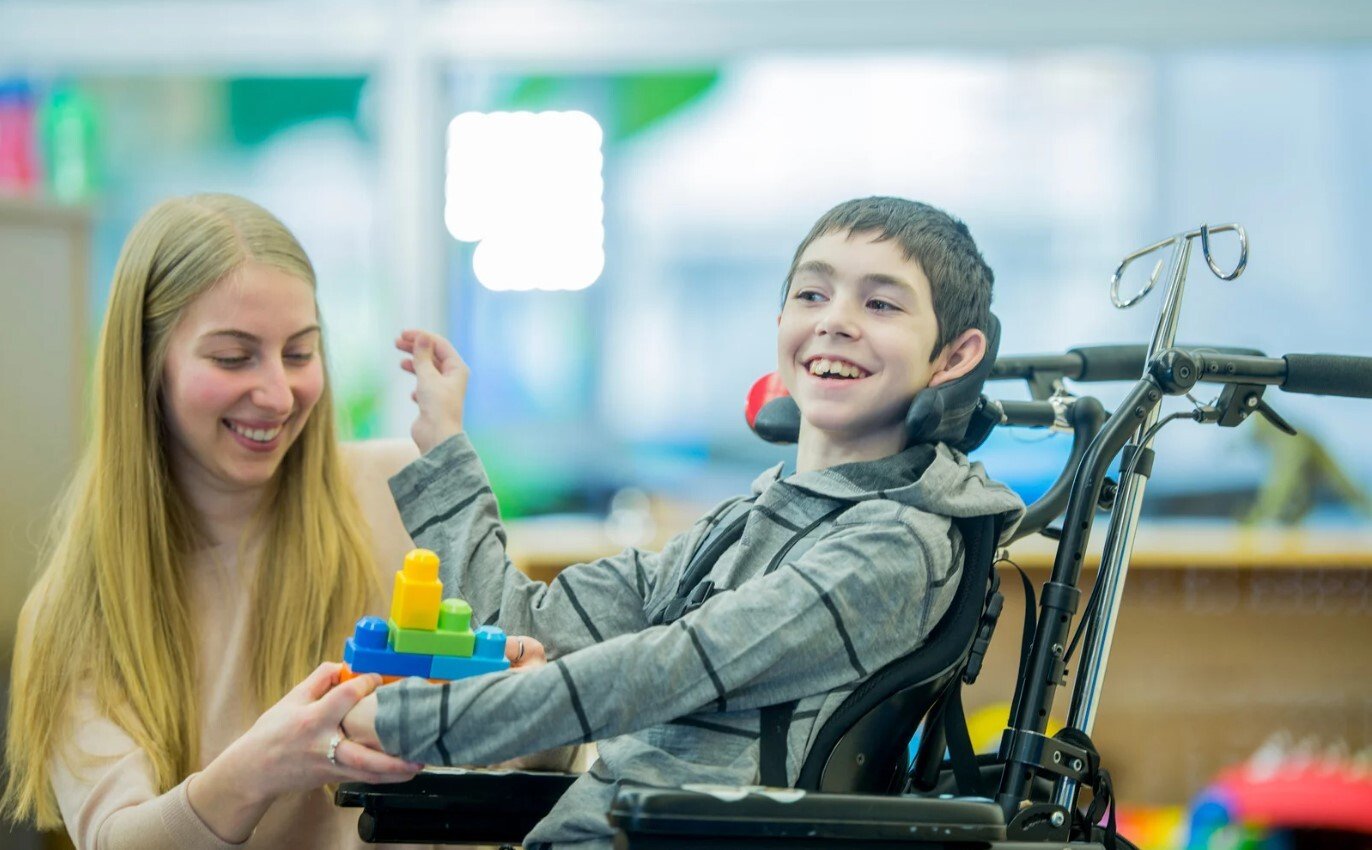Children with Cerebral Palsy (CP) and CP like conditions are at high risk for hip dislocation.
This is more common in children with Gross Motor Classification level system (GMFCS) level III through V. GMFCS places children with CP in categories I through V based on their self-initiated motor skills. Children classified as level I demonstrate physical independence while level V describes children who are physically dependent for all aspects of care. Forty five-ninety percent of level IV and V are referred for reconstructive surgery.
When children are born with cerebral palsy, the neurological symptoms do not progress. It is not degenerative. That said, the neuromuscular status of kids with CP changes as a result of the changes in muscle tone. Many kids with CP are born with very low tone and the increased tone in certain muscles develops as the kids develop movement patterns that function for them. An example of this is kids who throw their head back to roll and roll with their extensors- the extensor tone increases while the flexors/ abdominals remain weak and become overstretched. The roll helps them move and access toys so it is encouraged and increases the imbalance.
Doctors want to keep a close eye on the hips of these children. The hips are at high risk of hip dysplasia, which leads to subluxation and, untreated, dislocation. The abnormal muscle pull in these kids create forces which put them at higher risk for displacement.
The symptoms of hip issues are painless. The displacement at this time is measured by the Reimers Migration Percentage (RMP) through x-rays. It is important to follow children with routine x-rays or hip surveillance as once the hips dislocate fully, they cannot be surgically reconstructed.
Hip surveillance is recommended to start at the time of diagnosis and continue every 6 months/year through adolescence. Monitoring hip migration allows doctors to see changes and recommend interventions. The goal is to maintain function and improve quality of life.
The RMP measures the percentage of the head of the femur left uncovered by the acetabulum. Surgical interventions are considered when the RMP is greater than 30%. Muscle releases are an option to reduce muscle pull and buy time until full reconstruction is necessary.
Proximal Femoral Guided Growth (PFGG) is a new intervention which is offered to children under age 7 who demonstrate an RMP of 25-35%. This is a simple, minimally invasive procedure which can eliminate the need for reconstruction. A screw is inserted in the head of the femur encouraging growth which has a similar result to weight bearing. Having this option increases the need for early detection of hip displacement through Hip Surveillance.
Hip reconstruction (VRDO) is done after a hip migration of 30% has been noted. It can be earlier in ambulatory children as the hip position will impact gait. It is a complex surgery with a long recovery, but is preferable to a salvage surgery which occurs after full dislocation.
PT recommendations in the school-based setting:
- Static standing program
- 1 hour per day is recommended if the child is not walking in the classroom5
- Active standing
- At a changing table, at a desk, through transfers
- Active standing should be encouraged if the child is able to bear weight in standing, even if they need support.
- Activities in weight-bearing positions
- Hands and knees
- Tall kneel
- Half kneel
- Incorporate the developmental sequence in therapy activities
- Teach the child’s family about the importance of hip surveillance
- Ask at the IEP when the last set of X-rays was performed
- Encourage a home program
- Encourage families to download the HipScreen App
- This app gives families important information to share with their doctors and allows them to schedule routine imaging.
- For therapists, there is an RMP ruler which can be used to measure the percentage on an x-ray image
Understanding hip surveillance helps guide our treatment as well as educate the child’s family about the importance of staying engaged with their doctors about hip surveillance.
Following recommended hip imaging guidelines is essential to reducing hip dislocations in children with CP. While dislocation is slow and starts asymptomatically, monitoring hip migration percentage allows conservative management of hip deformity by physicians, avoiding dislocation and salvage surgery.
Author: Amy Wolstenholme, PT, DPT

